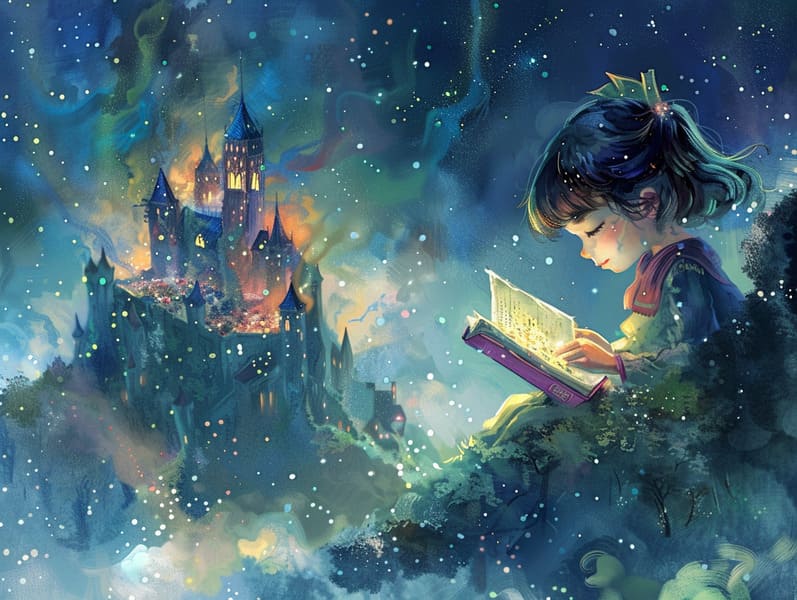The Beginning of Mythical Fairy Tales and Their Unchanging Beauty.
The Beginning of Mythical Fairy Tales and Their Unchanging Beauty.
Blog Article

Fairy tales have enduring presence. These tales have been shared from one generation to the next centuries before they were ever written down. They arose from a variety of traditions, including Asian traditions. They were initially passed along among mature audiences, often carrying themes and messages reflective of the societal norms and beliefs of the time.
The Brothers Grimm, Jacob and Wilhelm (the Grimm brothers), were among the first to compile and release many of these beloved stories. Their collection, "Grimm's Children's Stories," included stories like "The True Bride," "Hansel and Grethel," and "Snow White," which have since become cornerstones in the world of classic fairy tales. Similarly, the Danish author's whimsical stories, such as "The Mermaid," and "The Story of the Ugly Duckling," have won hearts worldwide, solidifying their place in the pantheon of beloved fairy tales.
Despite their ancient origins, these tales remain as pertinent as ever, especially as kids' bedtime tales. These delightful tales are now available in various formats, including artistically illustrated books, fantastical animations, and digital fairy tales.
Their lasting appeal can be traced to several whimsical characteristics:
Important Morals: Ancient fairy tales often impart important moral lessons. Tales like "The Wolf and the Liar" teach the value of honesty, while "The Story of the Tortoise and the Hare" stress the qualities of determination and unassuming nature. These tales offer young readers clear distinctions between moral and immoral, helping to shape their moral compass in a tender yet important way.
Compassion and Insight: Timeless fairy tales frequently present personalities facing trials and tribulations, prompting kids to resonate with their struggles and back their triumphs. For instance, "Beauty's Beast" reveals the importance of seeing inner beauty to acknowledge the real character of a person, advancing perception and awareness.
Cultural Awareness: Many classic fairy tales are deeply ingrained in the cultural contexts from which they emerged. Reading these stories can provide captivating looks into different ways of life, nurturing a sense of cultural insight and appreciation.
Inventiveness and Imagination: The extraordinary elements in traditional fairy tales—enchanted forests—motivate children’s inventiveness. These tales bring readers to magical realms, enhancing imaginative dreams and a sense of enchantment that endures a lifetime.
Old fairy tales are not only enchanting but also didactic. They serve as fantastical tools in promoting various thinking and feeling skills in little ones. When traditional fairy tales are recited, they foster speech development by presenting new terms and meanings and complicated sentence structures. This practice also develops listening abilities and mental focus, as young ones keep up with the story, enthusiastic to see what happens next.
Furthermore, examining the themes and characters of old fairy tales can promote thinking skills and cognitive skills. Little ones learn to discern patterns, anticipate outcomes, and make sense of cause and effect. These reflections also contribute to young ones say their thoughts and feelings, enhancing their emotional intelligence.
In today’s cyber age, the existence of internet fairy tales has made these narratives more available than ever. Web-based platforms and software present huge assortments of children's fairy tales that can be experienced or heard anytime, anywhere. Fairy tales recited are particularly well-liked, supplying an engaging way for children to delight in these captivating stories. Audio stories and narrated videos bring characters and settings to life, often augmented by enchanting audio effects and instrumentals that enhance the storytelling experience.
The lasting allure of traditional fairy tales lies in their ability to alter to today's society while maintaining their central values. Contemporary renditions of these tales often incorporate more varied characters and modern settings, making them relevant to today’s audience. However, the underlying themes of bravery, compassion, and rightness remain unchanged, continuing to move children of all ages.
Traditional fairy tales also offer a sense of comfort and recognition. They distribute a structured narrative with a apparent beginning, middle, and end, often ending with the wrap-up of conflicts and the triumph of truth over falsehood. This certainty can be placating for children, delivering a sense of consistency in an shifting world.
Old fairy tales continue to delight and enlighten new generations, maintaining their radiance and relevance in modern society. As bedtime stories for kids, they confer upon a perfect blend of wonder and wisdom, boosting moral values, empathy, and creativity. The abundance of online fairy tales and the widespread nature of fairy tales narrated validate that these traditional fairy tales remain within reach to new generations.
By guarding and imparting these tales, we continue to revere the rich tapestry of mythology and cultural heritage. Whether you are enjoying a vividly illustrated book, viewing a internet collection, or listening through an sound book, the wonder of children's fairy tales is always within reach. These fairy tales show us of the unceasing power of narratives and its ability to unify us across eras and regions.
Be it you are viewing a colorful picture book, accessing a virtual collection, or listening on an audio story, the magic of click here old fairy tales is always within reach.
These tales demonstrate of the persistent impact of narratives and its ability to bond us across centuries and lands, forging a link that captivates and teaches alike.